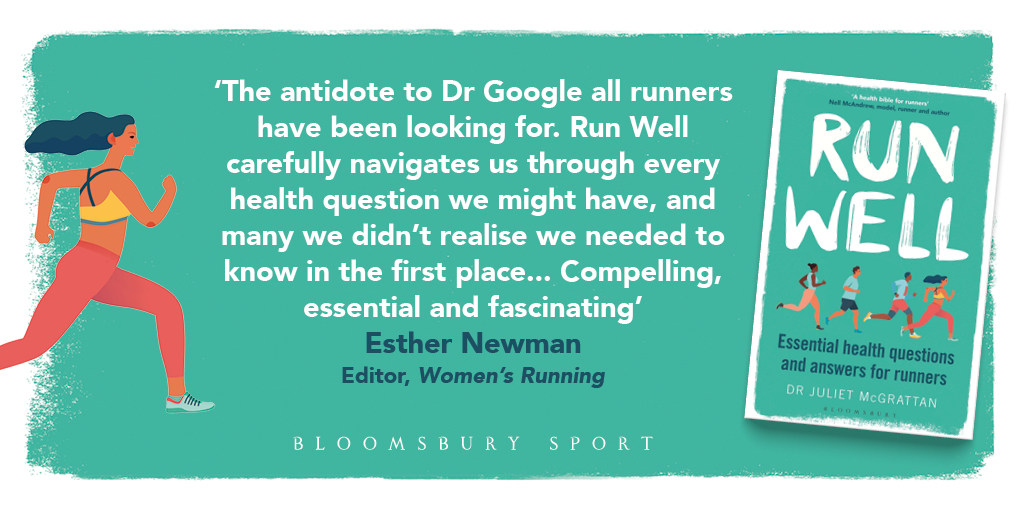Stitches can be so painful! You’re running along quite happily when you become aware of a dull ache or stabbing pain in your abdomen. It’s almost impossible to ignore and even though you hear of people running through a stitch, it’s really hard to keep going when you feel as if something inside you needs to burst or be surgically removed!
Why do we get stitches? What actually is a stitch? Why do some people get them more than others? How can you prevent a stitch and most importantly, what can you do to get rid of a stitch when you have one?
What is a stitch?
The fancy name for a stitch is ‘exercise-related transient abdominal pain’ or ETAP and around 70 per cent of runners have had one in the past year. It’s not really known what causes a stitch and there are lots of theories. They’re more common in sports where you are upright and moving, so runners and horse riders complain about them but they’re not frequent in cyclists. Some people get stitches all the time and others don’t and they seem to be less common as you get older.
You can feel a stitch anywhere in your abdomen. Most commonly it’s on the right hand side and it tends to be under the bottom of your ribs but it can be low abdominal pain too.
Here are some of the theories as to why stitches happen:
- A lack of blood supply to the diaphragm making the diaphragm muscle cramp up.
- Movement of internal organs causing a ‘tugging’ on ligaments and tissues.
- Nerve pain from the spine being referred to the abdomen.
- Friction causing irritation of the lining of the abdominal cavity.
- A lack of blood supply or swelling of the bowel.
Of course, like most things, it could be a combination of factors or there might be different causes in different people. More research on this topic would be helpful as I think the sensation of a stitch is so unpleasant that it puts people off exercising or makes them think they’re really unfit when they aren’t.
How can I prevent stitches?
When you don’t know the cause of something, it’s hard to work out exactly how to prevent it. The cause might also vary from day to day. There are some things that are known to make stitches more likely so try the following steps to reduce the likelihood of getting a stitch when you exercise:
- Allow enough time for your food to be digested before you exercise. Two hours after a meal is a minimum, many people need to leave three or four. Eating too close to running is a known trigger.
- Ensure you are well hydrated. It’s better to sip frequently in the hours before you exercise than to down a pint of water just before you head out. Large volumes of fluid can trigger a stitch and so can high sugar or hypertonic drinks.
- Warm up well. Easing yourself into vigorous exercise gradually might help to prevent a stitch but the evidence isn’t clear.
- Be patient. Stitches are more common in those just starting their fitness journeys so don’t let them put you off. As you get fitter you’ll find they generally happen less often
- Strengthen your core. Having strong supportive abdominal and back muscles helps to maintain good posture which may help to reduce stitches.
See if there are any specific behaviours that seem to trigger your stitches. Like many things in running it can be a case of trial and error.
How can I get rid of a stitch?
Even though stitches feel intensely painful they aren’t serious and keeping going won’t do you any harm. That said, it can be really uncomfortable to keep running and you want to try and get rid of the stitch as soon as possible. Here are some techniques (mostly from anecdotes rather than research) which might help ease and get rid of your stitch:
- Slow down. Keep going but just reduce your pace. Taking the pressure off a little can be enough to let a stitch resolve and you can then crank up the pace again when you feel comfortable.
- Relax and breathe. Focus on your breathing, slow it down, inhale deeply, right into your belly and exhale fully too. Finding a regular, rhythmic breathing pattern can help.
- Stretch your abdomen. Try putting your hands on your head and tilting your body to the side so that the area your stitch is in is stretched out. You can do this while you’re on the move.
- Touch your toes. Stop for a moment and bend forwards. Take a few deep breaths in this position.
- Press on the stitch. Place your hand over where the stitch is and press firmly while you breathe in and out; try massaging it too.
- Time your stride. Many people claim they can get rid of stitches by slowing their pace and exhaling as the foot on the opposite side of the body from the stitch, hits the ground. Try it for yourself and see!
As you can see, there are many unknowns and many things to try but not a whole lot of hard evidence when it comes to stitches. Do you get a lot of stitches? What works for you? Share your stitch tips in the comments below or on my social media.
There was an interesting review article in Sports Medicine in January 2015, which helped me to write this post. Do take the time to visit it if you’d like to read more about stitches.
There are more answers to questions like these and lots of health information to help you run well in my book Run Well: Essential health questions and answers for runners, published by Bloomsbury and available everywhere you buy books.

Featured image: Vilkasss at Pixabay







